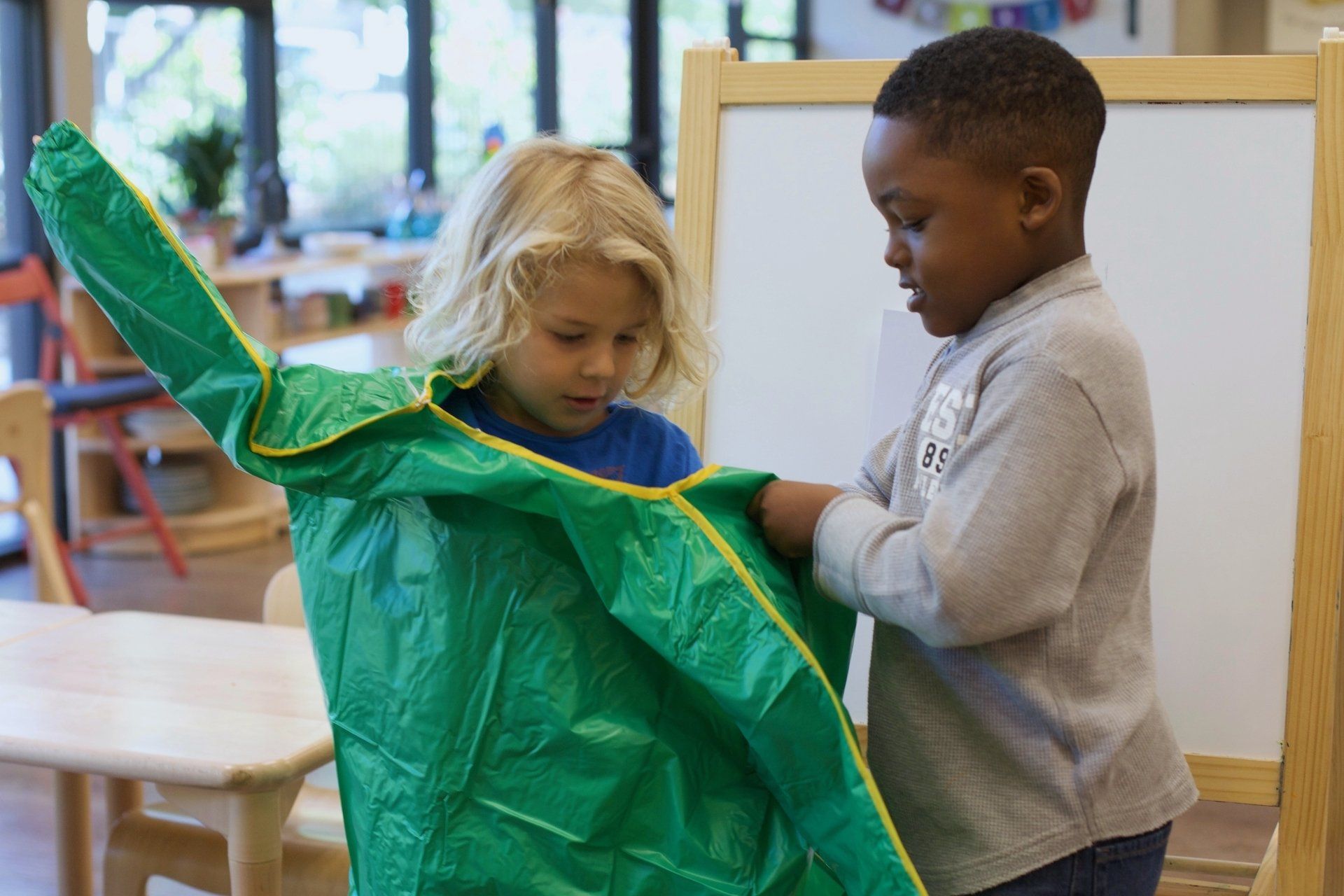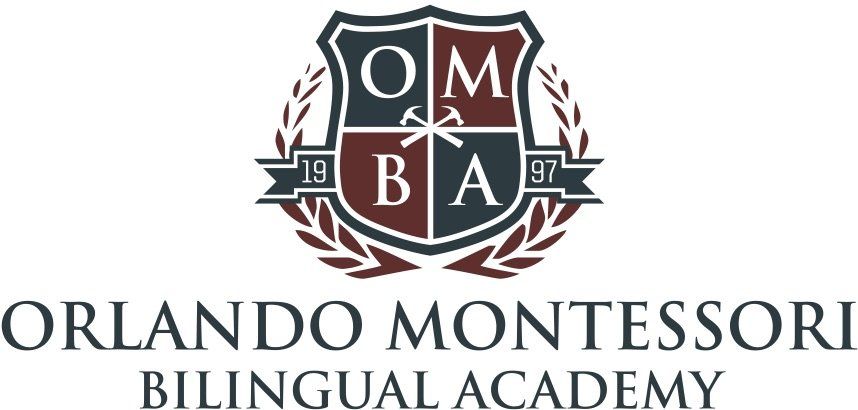Blog Layout
150 Years: Supporting the Growth of Montessori for All Children
Sep 14, 2020

This article is part of a series that we will share throughout the 2020-2021 school year to celebrate the 150th birthday of Dr. Maria Montessori. Check back often for more posts that reflect on the past, present, and future of Montessori education.
If you’re reading this article, you are likely already a champion of Montessori education. At the very least, you’ve heard anecdotes or read other articles that have piqued your interest and you want to learn more.
We truly believe that Montessori is an excellent option for children. Beyond that, we believe the philosophy has the power to change the world. Montessori was an advocate for peace, equality, and respect for human beings, no matter their age or abilities.
Maria Montessori’s earliest work centered on children who were marginalized by the society they lived in. She believed that lifting up all members of a society was best for everyone. Today, the vast majority of Montessori schools across the globe are independent schools, leaving access to this important model generally limited to those who can afford it.
What can we do to ensure Montessori is available for everyone? The search for a solution is ongoing, but the journey is a critical one that we must continue to work toward.
How It All Began
At the onset of the twentieth century, a newly graduated Dr. Montessori was put in charge of the Orthophrenic School in Rome. Prior to her arrival, the children who lived there were essentially tucked away from the rest of society in a dull and unstimulating environment. Physicians today may have diagnosed these children with learning disabilities, autism, or other disabilities that caused them to present slightly outside what was considered ‘acceptable’ at the time. These disabilities were not understood, so the solution was to simply send the children away.
Montessori and her colleagues would not accept the environment as it was left to them. They quickly began observing the children, learning more about their needs, and developing activities and materials that helped develop and nurture the senses as well as teach valuable practical life skills. The children soon learned to master activities such as preparing their own meals, and eventually moved on to academic pursuits within the school. After some time, many of these children were able to perform as well as ‘typical’ students on standardized tests.
Shortly after her time at the Orthophrenic School, Montessori was called upon to begin a school in a low-income neighborhood in Rome. The resident parents of young children had to work long days, and since the children were too young to attend grade school, they were left to fend for themselves at home. This resulted in general disruption and chaos, so the manager of an apartment complex thought a primary school could be the answer.
Casa dei Bambini was established in 1907. Once again, Dr. Montessori set to creating materials and lessons that supported the development of the children’s senses and practical life skills.
This soon expanded to math, language, and other subject areas. She found it critical to meet with the children’s mothers on a regular basis, so that they may be informed about the learning that was taking place.
It quickly became apparent that not only was this education a positive experience for the children, it was having a profoundly positive impact on the families, and in turn, the entire neighborhood.
Montessori Today
Montessori education continues to flourish today, well into the twenty-first century. In countries across the globe, parents seeking something different than conventional education methods turn to Montessori.
Estimates state there are approximately 20,000 Montessori schools globally, with about 5,000 of those in the United States. Roughly 10% of US Montessori Schools are free public schools, with the remainder existing as tuition-based independent schools.
Independent schools have great benefits. Unbound by federal, state, and district mandates, they are able to fully implement high-fidelity Montessori programs that are encumbered by a wide variety of hurdles faced by public schools, including high-stakes testing. And independent schools are doing what they can to enroll diverse student populations. Annual fundraisers typically contribute to financial aid programs, as do donations made by individuals.
As for public Montessori schools, there are excellent, high-quality examples across the country. The trouble is, public schools face a constant uphill battle to gain autonomy from rigid district requirements, and it can be challenging for some to offer a fully implemented Montessori program.
What does this all mean? While there is an increasing interest in Montessori education, it is largely available to middle- and upper-income families, leaving lower income families with few (if any) options.
Initiatives That Support Change
There are a number of organizations that actively support greater access to Montessori education. Here are just a few:
MSJ’s mission? “We support the creation of sustainable learning environments that dismantle systems of oppression, amplify voices of the Global Majority, and cultivate partnerships to liberate the human potential.” Their work goes beyond simply creating more Montessori opportunities for all; they strive to create a more equitable experience for all. Over the past seven years, their movement has gained widespread support as they continue to address systemic social justice issues and how they relate to Montessori education.
From their website: “The National Center for Montessori in the Public Sector is an independent non-profit organization supporting the growth of public Montessori with tools and resources, training and orientation, and direct school services.” NCMPS strives to support schools and educators in providing high-quality Montessori education in public schools across the United States. They also release a print and digital news and information source three times annually. More information on that can be found at https://www.montessoripublic.org.
The Wildflower network was born out of one parent’s desire to open a small, independent, neighborhood school that would serve local children. The organization has blossomed into a decentralized network of independent microschools that honor principles such as authentic Montessori instruction, shopfront microschools (1 or 2 classes) led by teachers, innovation, strengthened connections with the home, and a commitment to equity. Wildflower was not necessarily created as an answer to the lack of Montessori for all, but the model lends itself to solving access issues. Many of the schools are opened by teacher-leaders with this goal in mind. One great example is that of Janet Begin’s
work in Haverhill, Massachusetts.
What You Can Do
While there is certainly progress being made, there is still lots of work to be done. Here are some ideas on how each of us might contribute.
- Support high-quality Montessori education. Anyone can say they are ‘Montessori’. For the general public to take Montessori seriously, and for its many benefits to be fully realized, we must focus our efforts on high-fidelity Montessori programs.
- Donate what you can to support scholarship initiatives. Our school welcomes donations that allow us to offer financial aid to families that would not otherwise be able to afford our tuition. The more donations we collect, the more families we can serve.
- Advocate for programs within your local public district that allow innovation. Show your support for your local public schools! The teachers in most public districts face constant pushback when trying to implement innovative approaches. Programs such as federal magnet grants can help schools provide students with alternative education offerings.
You might also like

19 Sep, 2022
Adolescents exist between two worlds: they are no longer children but they aren’t yet adults. On this bridge to adulthood, adolescents need opportunities to develop real, meaningful, adult-level skills. They aspire to do what adults do. They are curious about how to make their own way in the adult world. As adults, we are part of an economic system. Even if we aren't using money to buy something, through our work or our hobbies we produce or consume aspects of culture. In this way, economics is about the web of interdependence we have with other people. We all depend upon the work and activity of others. Economics and Interactions If we look at economics as how people offer value in their interactions, as well as the production, distribution, and consumption of services and goods, we can really think about economics as how we organize ourselves in society. Because adolescents are building the skills for stepping into the adult world, it’s important to consider how they are developing their ability to navigate this economic aspect of adult life. How many of us had the opportunity, as adolescents, to develop the skills necessary for economic independence? How would our lives be different if, as adolescents, we had a support system so we could Oigure out a fair and reasonable cost for goods we produced, faced the reality of a proOit and loss statement, or found our way in navigating the paths of spending, saving, and sharing? Road to Achieving Economic Independence Dr. Maria Montessori realized the importance of adolescents developing these kinds of skills. In From Childhood to Adolescence, Dr. Montessori made a bold statement about our approach to education and its impact on the greater society. She stated it clearly: “The essential reform is this: to put the adolescent on the road to achieving economic independence.” So in Montessori adolescent programs, we offer our emerging young adults the opportunity to learn key skills of production and exchange. We sometimes call this “microeconomy.” The basic idea is that adolescents need opportunities to produce goods and services, and work with money and monetary systems, so they can develop an understanding and appreciation for how economies work and their own role in economic systems. Real, Meaningful, and Purposeful Work This experience can take many different forms depending upon the community. Whether running a farm stand or a holiday marketplace, adolescents get to learn key skills. They learn to balance proOit and loss. They discuss and determine how much money should be reinvested into the business to help it grow or how much money should be reinvested in the greater community. They respectfully listen to their customers’ needs and concerns and incorporate that feedback in useful ways. In order to have these learning experiences, adolescents need real, meaningful, and purposeful work. Just like young children need to actually prepare food rather than play with a pretend kitchen set, adolescents need actual experiences in creating a business plan, keeping track of income on a spreadsheet, and balancing a budget. They need to practice accounting work so they can build the skills for their own economic independence. They need to have the thrill of handfuls of cash and then face the responsibility of keeping track of those earnings. They need the experience of paying for replacement materials when they have overused key supplies. If they have developed some savings and want to invest the money, they need to Oind opportunities that align with their values. Preparing for Adult Life Too many of our young people enter the world of adult lives without having experienced their role in an economy (perhaps other than being consumers!). Economic independence is a key part of preparing for adult life. We want our adolescents to step into maturity with conOidence that they can independently navigate their new responsibilities and roles. If we give adolescents the opportunity to learn how to have a sound basis for their economic decisions, imagine where they will be when they are adults and making decisions that affect broader aspects of society!

12 Sep, 2022
In their first weeks of life, babies begin to focus their eyes and track objects. These small acts of visual control provide an important foundation for newborns who are building their neural networks. To set infants up for success, we offer a series of specially designed mobiles to aid this development. Each Montessori mobile is created with particular characteristics to help babies further develop their sense of sight, depth perception, concentration, hand-eye coordination, and more. Plus, newborns love them! Essential Characteristics of Montessori Mobiles Montessori mobiles follow a progression that parallels infant development. The first mobiles have a visual focus and begin with basic shapes. They progress to include more complicated objects and eventually become interactive and tactile. The first mobiles are simple and light enough to allow them to flow with gentle air currents. In order for infants to have the best visual experience, a mobile should be hung so that it is about 12 inches in front of them rather than directly above. When babies are lying on their back, there should be a visual line at about a 45-degree angle from their eyes to the mobile. This particular placement allows infants to see the whole mobile moving. Each mobile has visual components designed to help infants track the objects and sharpen their vision. Then after these opportunities to follow objects visually, infants begin to have more arm and hand control and might begin to reach and grasp objects nearby. To support this new ability to reach and grasp, the mobiles take a slightly different form and thus need to be easy to grasp, colorful, and safe for children to mouth. Progression of Mobiles: Visual The first four mobiles–the Munari, Octahedron, the Gobbi, and the Dancers–provide babies with meaningful visual experiences when they are just recognizing shapes and then later identifying colors.

05 Sep, 2022
In Montessori, we talk a lot about independence. However, one of the lesser known or understood aspects of Montessori is that independence isn’t the end goal. As humans, we are each wonderful, unique individuals. But we don’t exist in isolation. We live amongst other wonderful, unique individuals! In order to effectively live in community with other people, though, we need to be able to function independently. Said another way, before we can offer help to others or make ourselves useful, we need to be able to meet our own needs. How can we be independent and interdependent at the same time? We all want to make choices for ourselves, exercise our liberty, and be responsible for our own lives. At the same time, we also want to be part of something. We are designed to be both independent and be in community. These two needs are not mutually exclusive, but in fact, operate in relationship to each other. We have an innate desire to be autonomous and to belong. When we develop the ability to act for ourselves, make choices, control ourselves, and accept responsibility, we are able to be functioning, contributing members of society. We can see what needs doing and do it because we have the skills to do so. We can work with others to create solutions or produce goods and services. We can be part of a community by acting and taking responsibility for our actions, each able to contribute because we all have the skills to do so. What does this have to do with children and Montessori education? From a very young age, children are trying to exert control over their lives. Children are trying to gain functional independence from birth to about age three. In Montessori classrooms, we offer all sorts of opportunities for young children to develop skills that help them take care of their basic needs. But we don’t stop there! We also provide so many ways children can care for others and for their surroundings. Once children have mastered pouring from one pitcher to another, they are able to pour water into a vase and arrange flowers to beautify the classroom. After they learn how to sweep, they are quick to notice a spill and rush to get the dustpan and dust brush so they can help. When someone is struggling to zip their jacket, they take pride in sharing their newfound skill in service to someone else’s need. As children move into the elementary years, this service to others often takes on a slightly different form, in part because elementary-age children are developing their intellectual independence. Thus, their contribution often involves applying these newfound intellectual skills. They might notice a classmate struggling to figure out the steps in a math problem and offer support. Or when friends are in conflict, they might provide some mediation to help each party listen to the others’ perspective. In adolescence, young adults are ready to work toward being socially and economically independent. They want to figure out their place in society, grapple with real problems, and contribute in a useful way. Thus, Montessori adolescent programs offer teens the chance to develop and feel secure in their own abilities while also collaborating in real and meaningful social endeavors. In the process of running a small business, for example, adolescents are applying their intellectual skills from marketing to mathematics, while also navigating how to communicate with customers and collaborate with classmates. Why is this important? As humans, we want to achieve independence and belonging. Being independent is about learning the skills to be able to contribute in a meaningful way. All the little conquests of independence–throughout each age and stage of development–matter! When our infant reaches to grasp an object, our two-year-old demands to put their shirt on themselves, our eight-year-old argues about just and fair rules of a game, or our adolescent insists they can solve a problem with their peers, we can remember that these acts of independence are laying a foundation for our children to become part of an interdependent, harmonious society. Independence is just a step. Interdependence is the ultimate goal.
